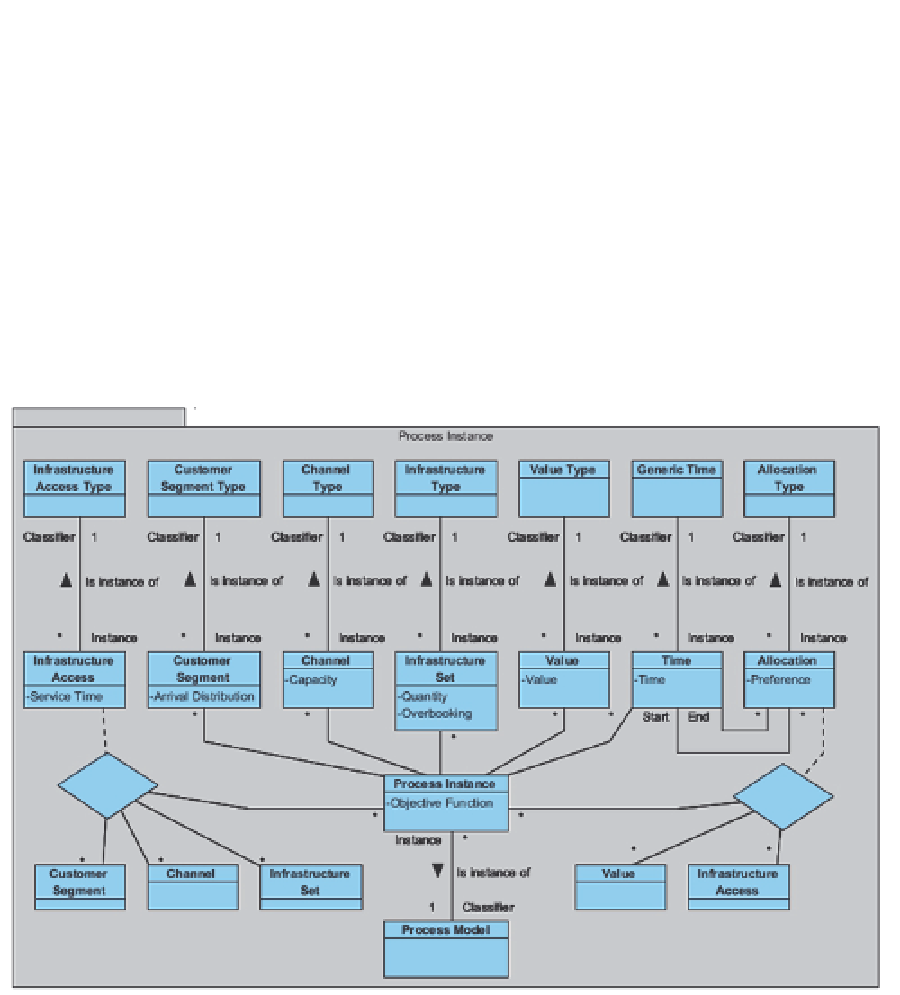Information Technology Reference
In-Depth Information
Given the arrival rate for each customer type, the number of rooms to be offered, the
time T2 at which the price changes and assuming that there are no channel access
restrictions, determine the full and the discounted price that would maximize the hotel
profit.
Both cases correspond to the same business process model. They are, therefore, instances of
this process. Figure 3 depicts the UML model of process instances, in which, following the
same approach as Gutierrez
et al
. (2006), each basic generic entity of the metamodel is
associated to an instance that contains the parameter values and eventually the optimization
variables. It is consequently at this layer that optimization problem definition takes place.
There will be a group of optimization problems depending on the set of known parameters
and on the set of variables to be optimized. Whereas the first two levels describe families of
process models, in this level we find the organized collection of optimization problems that
can be associated with those models.
Fig. 3. UML class diagram of the Process Instance definition
We have included only a reduced number of representative parameters/variables for each
entity as a means of illustration of the model capabilities. When trying to solve different
infrastructure allocation problems, the necessity of further parameters will appear.
Nevertheless, it is important to underline that the generic approach taken allows handling
the natural extension of the group of parameters without extra coding or compilation
(Gutiérrez
et al
. 2006). The user interface component of the DSS for which the model base is
designed, should help the definition of entity attributes at this level. These attributes would
be inserted in the corresponding database in an automatic pre-compiled procedure.

Search WWH ::

Custom Search